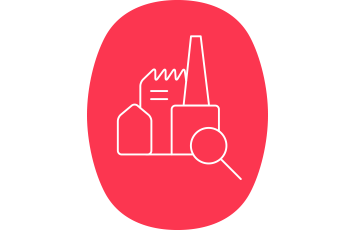
Meet the Next Generation of Low-Carbon Tankers
They’re larger, more reliable and prepared to confront the energy transition; they're the new face of tankers. Critically, these new tankers must be able to operate 25 years or more into the future – and that means using fuels that will allow them to meet carbon reduction targets.
This year, Bureau Veritas has leveraged its experience in LNG and alternative fuels to support the development of innovative tankers.
Dual fuel VLCC: first in class
In February, we classed our first dual-fueled very large crude carrier (VLCC) – the Eagle Valence. Constructed at Samsung Heavy Industries (SHI) in Korea, the 300,000-deadweight-ton vessel can burn LNG as fuel in its WinGD 7x82DF engine. The fuel is supplied by two 3,750m3 capacity Type ‘C’ tanks.
Our knowledge of LNG as fuel was mobilized from the design phase for this first-in-class dual fuel VLCC. From plan approval to classing the vessel – now under charter to TotalEnergies – Bureau Veritas experts played a key role in ensuring this sophisticated tanker can take to the seas safely.
Dual fuel carriers like the Eagle Valence open a window into what the future of the maritime energy transition will look like. A new generation of VLCCs will contribute both to maritime decarbonization as a whole and to the reduction of scope three emissions in countless other sectors.
Ammonia-prepared innovation
But the newest tanker designs are looking even further ahead: to the potential of zero-carbon fuels like green ammonia. This year we also awarded an Approval in Principle (AiP) to an LNG dual-fueled and ammonia fuel-prepared VLCC.
The design – from partners China Merchants Energy Shipping (CMES), TotalEnergies, Dalian Shipbuilding Industry (DSIC) and GTT – accounts for both short- and long-term fuel needs. Equipped with a GTT Mark III membrane containment technology, the vessel will be fueled with LNG, but also compatible with liquid ammonia.
This next generation VLCC boasts impressive sustainability statistics: an EEDI more than 40% under baseline, a projected A-rating for CII in 2030 and Tier III-compatible NOx emission requirements. It should be noted that this outcome was made possible through the close collaboration of shipyard, energy industry, ship owner, core equipment suppliers and class.
Our teams supported this innovative project from its inception, with full plan approval and design support. We have also awarded the project our additional service feature LNGfuel dualfuel and additional class notation AMMONIAFUEL-PREPARED.
Driving the next generation of tankers
Bureau Veritas is leading the charge on innovative new LNG-fueled vessels. A partner from design through operation, we are classing the new generation of sustainable tankers.
Beyond LNG, we are supporting ship owners and operators in preparing to safely use alternative fuels such as biofuels, methanol and ammonia. Our teams are by your side to help you meet safety, technical and regulatory challenges and future-proof your fleets for the energy transition.










